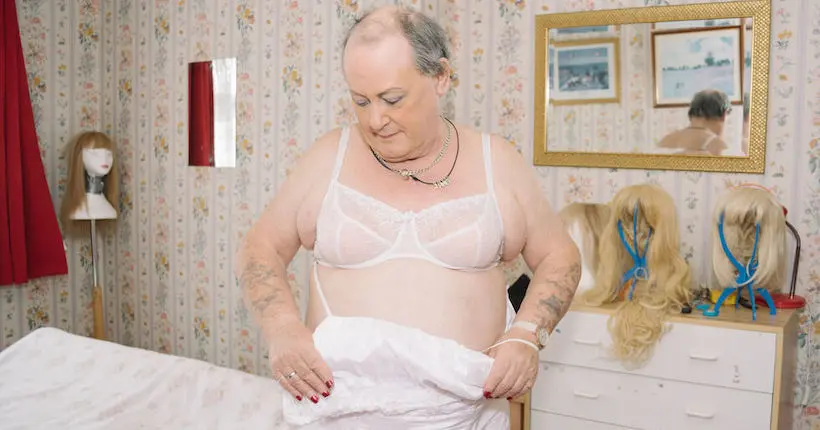Après s’être rendu compte du manque de diversité et de réalité dans la représentation de la pluralité des genres, le collectif Global Health 50/50 a initié un concours invitant les photographes du monde entier à “partager leur vision du genre, de l’intersectionnalité et de la santé”. L’organisation, qui œuvre à “l’égalité des genres dans la santé mondiale”, a rassemblé les travaux de plus de 200 photographes originaires d’une cinquantaine de pays.
À voir aussi sur Konbini
Les images sont porteuses de représentations toutes plus variées les unes que les autres. Cet “essai visuel” offre des ouvertures quant à la perception de ce que la notion de genre englobe – et ce bien loin d’une conception binaire jugée traditionnelle :
“En cette période où le concept même de genre et de l’égalité des genres fait l’objet d’attaques, les images qui explorent le genre dans toute sa diversité sont plus importantes que jamais. […] Nous avons reçu des visions inédites et tendres de la façon dont le genre fonctionne dans la société”, confie le cofondateur de l’organisation, le docteur Kent Buse.
Untitled (Johannesburg, South Africa. 2018) Micha Serraf Two non-binary people in a golden field in Johannesburg. Serraf draws on the visual language of afrofuturism to explore gender and African-ness, and the construction and deconstruction of identity, belonging, blackness, queerness, and masculinity. Micha Serraf is a Zimbabwean photographer and artist navigating post-apartheid South Africa. (© Micha Serraf)
“À quoi ressemble le genre ?”
L’organisation expose les images gagnantes de sa compétition à Londres, dans le cadre de “This is Gender”, une exposition qui répond en images à la question : “À quoi ressemble le genre ?” En un seul endroit, on peut ainsi participer à un voyage à travers le globe des fluctuations du genre, de ce que signifie se sentir homme, femme ou non-binaire. L’exposition rappelle que ce qui est souvent considéré comme une notion “traditionnelle”, soit une vision tout à fait binaire du genre, est loin d’être traditionnelle dans de nombreuses cultures.
Dans les régions du sud de l’Inde par exemple, Sunayana Dhang montre des acteurs se “transformer” en femmes pour participer à une danse traditionnelle. Toujours en Inde, l’italienne Silvia Alessi a immortalisé des hijras, un troisième sexe marginalisé ; tandis qu’en Angleterre, Emma Wilson a suivi Janet, anciennement Jim, et sa transition initiée à l’âge de 66 ans.
Janet at home (Bransholme, Hull. 2018) Emma Wilson Jim was a former soldier and truck driver. Jim transitioned to Janet in 2015 at the age of 66. She lives in a working class community in the North of England, in the same house as she formerly lived as Jim with his wife and two children. This has caused significant issues for Janet as she attempts to move forward in her life on one of the biggest council estates in Europe. Through visual contradictions, Wilson explores the intersection of white, working class masculinity with transitional gender fluidity. Emma Wilson is a British artist based in Yorkshire, England. (© Emma Wilson)
Convaincue que l’égalité dans l’accès aux soins et dans le secteur de la santé est un “ingrédient essentiel” pour parvenir à l’égalité dans les autres domaines, Global Health 50/50 affirme la nécessité d’une représentation visuelle, à l’échelle mondiale, des multiples visages que revêt le genre. Par sa visée internationale, le concours insiste sur la nécessité de l’aspect intersectionnel des représentations du genre ; l’exposition des œuvres est quant à elle un pavé ajouté au chemin de l’acceptation et de la diversité de la représentation.
Hijras (Mumbai, India. 2017) Silvia Alessi Three Muslim transgender hijras in their room in a Bandra slum, Mumbai, prepare for their evening and share jokes. Living at the margins of society, the women find comfort in their shared experience. Silvia Alessi is a photographer and make-up artist from Italy. (© Silvia Alessi)
Untitled (Johannesburg, South Africa. 2019) ANDYMKOSI Tsepo Kghathlane and friends pose together at the Le Grande Fetish Ball competition the day before Johannesburg Pride, a ball to celebrate the many intersections of blackness, queerness and class in South Africa. Andiswa Mkosi is a multidisciplinary artist born in Cape Town. (© Andiswa Mkosi)
Who’s There (Varanasi, India. 2014) Dhrubajyoti Bhattacharjee In the midst of a power cut, an elderly woman searches for her medicines in her small room in an old people’s home in Varanasi. The widowed woman, although elderly and living in squalid conditions, seems strong, capable and independent. Her face is determined, her posture supported by her own arm, and her hand holds steady the illuminating light. Dhrubajyoti Bhattacharjee is territory manager in a publishing house and amateur photographer based in India. (© Dhrubajyoti Bhattacharjee)
Life Partners (Karnataka, India) Digwas G Hegde A man and his transgender wife stand in front of the home that they have shared for 40 years in Karnataka, India. Digwas G Hedge is a fine art and travel photographer from India. (© Digwas Bellemane)
Almost there (Mexico City, Mexico. 2017) Sandra, an apprentice midwife, comforts Angela as she endures another contraction during her home birth. Forming part Urban Midwives, a project which portrays the underrepresented work of midwives in Mexico City, this image positions the underfunded midwifery care system as a political act of resistance and a viable alternative for the thousands of women unable to give birth in hospitals due to the high fees and, at times, discriminatory practices. Greta Rico is a Mexican documentary photographer. (© Greta J. Rico)
Kathali (Kerala, India. 2019) Sunayana Dhang A male actor in his dressing room, prepares for his role in the Kathakali dance. Across the Southern states of India, it is traditional for men to transform into female characters in order to perform this traditional dance. Sunayana Dhang is an amateur photographer and professional teacher from India. (© Sunayana Dhang)
L’exposition “This is Gender” organisée par Global Health 50/50 était visible à la University College de Londres, jusqu’au 20 mars 2020.
